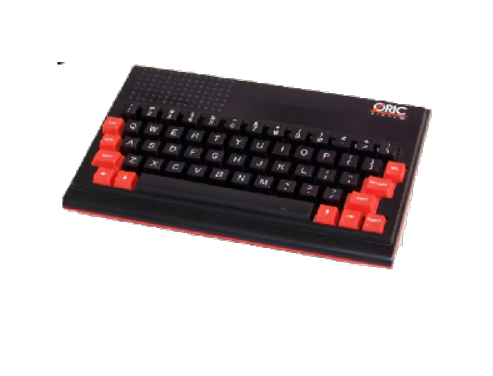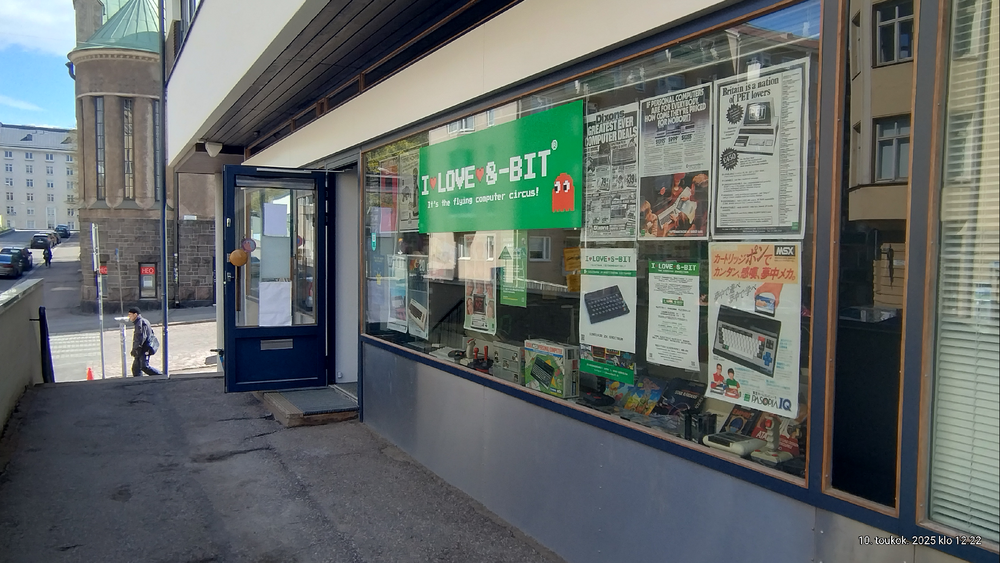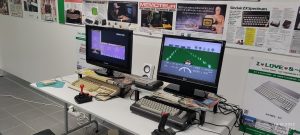The forgotten 8-bit hero:
The Oric Atmos
In the early 1980s, the home computer market in Europe was booming, with machines like the ZX Spectrum, Commodore 64, and BBC Micro capturing the imagination of hobbyists and families. Among these, the Oric Atmos, released in 1984 by Oric Products International, represented a unique and ambitious effort to bring advanced computing to a wide audience at an affordable price. Designed as an improvement over the earlier Oric-1, the Atmos combined enhanced reliability, improved hardware, and a more comfortable user experience, aiming to carve out a niche in an increasingly competitive market. At its core, the Oric Atmos featured a 6502-compatible CPU, running at 1 MHz, with 48 KB of RAM, allowing for sophisticated software and game development for its time. One of its notable improvements over the Oric-1 was a full-stroke keyboard, replacing the original’s less user-friendly design, which made programming and typing more comfortable for both beginners and advanced users. The machine offered color graphics with a resolution of 240×200 pixels and eight colors, as well as simple sound capabilities through its built-in speaker. While not as powerful as some of its contemporaries, the Atmos provided a balanced and approachable platform for education, gaming, and programming.
Gaming was a central feature of the Oric Atmos experience. The machine supported a wide range of titles, from arcade-style action games to adventure and puzzle games, many of which were developed by enthusiastic hobbyists and small studios. The users, along with players across Europe, appreciated the variety and creativity found in the Atmos game library, despite the machine’s relatively limited graphics and sound capabilities. Developers learned to optimize memory and graphical resources, often producing games that were surprisingly complex given the hardware constraints. The Oric Atmos also excelled as an educational tool. Its built-in BASIC interpreter enabled users to write their own programs, experiment with algorithms, and create simple games or applications. Schools and computing clubs in some European countries adopted the Atmos as a way to introduce students to programming and computational thinking. The combination of an accessible keyboard, user-friendly interface, and educational software made it a practical choice for parents seeking to provide children with both entertainment and learning opportunities.
One of the defining characteristics of the Oric Atmos was its balance between affordability and capability. While the Commodore 64 and ZX Spectrum offered more advanced graphics or sound, the Atmos was cheaper and easier to operate, which appealed to budget-conscious consumers. Its compact design, reliability, and straightforward operation meant that it could fit comfortably into homes and classrooms, providing a complete computing experience without the steep learning curve of more complex systems. Despite its strengths, the Oric Atmos faced stiff competition. The home computer market in 1984 was crowded, and machines like the ZX Spectrum, Commodore 64, and later the Atari 600XL series offered broader software libraries and more advanced multimedia capabilities. These factors limited the commercial success of the Atmos, and production eventually ceased in the late 1980s. Nevertheless, the machine left a lasting legacy, particularly among hobbyists and collectors who value its role in democratizing computing and providing an approachable entry point into programming and gaming. In retrospect, the Oric Atmos represents a significant chapter in the history of home computing. It combined usability, affordability, and versatility in a package that was both educational and entertaining. The enthusiasts remember the Atmos not only for its games and software but also for its role in inspiring a generation to explore programming, problem-solving, and creativity. Though overshadowed by some of its contemporaries, the Oric Atmos remains a symbol of the early home computing era, reflecting the innovation, ambition, and accessibility that defined the 1980s personal computer revolution.































